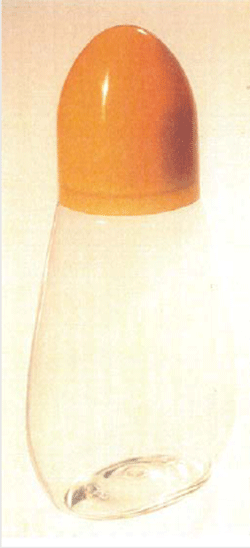Michaud Family Apicultures S.A. vs. Graham Packaging Company B.V.
 ’s-Hertogenbosch Court of Appeals, 14 October 2008, HD 103.003.078, Michaud Family Apicultures S.A. vs. Graham Packaging Company B.V.
’s-Hertogenbosch Court of Appeals, 14 October 2008, HD 103.003.078, Michaud Family Apicultures S.A. vs. Graham Packaging Company B.V.
Copyrights, designs and models law. Second interlocutory ruling in the honey pot case. Parallel procedures in France and The Netherlands. Legal system controlling infringement. Model is invalid, but defendants honey pot is protected thought copyright. A report by an expert is a determining factor.
The court rules that the result of the parallel French procedure regarding the same honey pots is not a deciding factor in the Dutch procedure. It is preferable that the national judgments are in agreement with one and other, but copyright and protection of industrial design are national matters. Thus a stay in judgment is not necessary. A ‘central attack’ is not an option either. The invalidity of the international model in France has no consequences for the same international model in the Netherlands.
The question whether or not the registration is invalid because the important characteristics of the model are insufficiently defined is, according to the court, not a question of formalities or administrative requirements (such as a colour photo or a black-an-white photo, in which determination is made by the regulatory provisions) but it is a matter of jurisdiction and the scope of protection which is determined by domestic law. In this case it means that research has to be done on whether the final characteristics of the model are sufficiently evident from the industrial designs registration provided.
“7.16. In the view of the court this is not the case. In this the court takes into account that in said copy the rather large dark yellow cap adopts a conspicuous position whereas the claims of Michaud precisely do not relate to the cap, but exclusively to the jar without said cap. The cap should as it were be thought out of it when examining the deposit. What then remains, is nothing else in the perception of the court itself, but the rather vague outlines of a somewhat spherical bottle or jar. According to Michaud this can be concluded simply from the honey jar as used in practice, but the court cannot agree to this stand at all. The reproduction of the jar(without cap) may result into many varying shapes, as shown by Owens at the oral pleading, and not specifically into the specific shape which Michaud intended to deposit. The description of the design is very global in this, and so no holds can be found in this either for further specification of the characteristics of the design.
7.17. All this implies that the court reaches the same conclusion as the District Court, i.e. that the deposit is invalid and that the honey jar is not entitled to design right protection in the Benelux. Ground 3 of the principal appeal which regards this is dismissed.”
Michaud’s honey pot, is however, protected by copyright. The expert-report supplied by the claimant is of crucial importance in this matter.
“7.20. In substantiation of its stand that the honey jar does have its own personal character and bears the personal stamp of the maker Michaud submitted a report by Prof.ir. J.J. Jacobs of April 26, 2006 (Exh. 27 Michaud). Prof. Jacobs was presented, to put it briefly, both with the question whether the honey jar of Michaud can be characterized as original and the question whether the bottle produced by Owens is similar to this design. This stage concerns the answer to the first question. The answer of Prof. Jacobs to this question is in the affirmative, whereas upon answering he discussed the defences of Owens in this respect. The report by Prof. Jacobs has been drawn up by an expert hired by one of the parties. In general such reports should be looked at with some restraint. When taking this into account the court also establishes that the report comprises a sound substantiation of the stand of Michaud whereas the contestation of its merits by Owens was not sufficiently reasoned and in fact boils down to a repetition of previous allegations already refuted by Prof. Jacobs.
7.21. By reason of these considerations the court assumes that the honey jar has not been derived from any other work and does bear the personal stamp of the maker, and so in principle qualifies for protection under copyright law.”
Regarding the question of ‘makership’ and current holder of copyright (of which the determination is made by French law) there us still some lack in clarity. The court rules Michaud’s statement that Barrault transferred their rights to them (as designer of the honey pot) as being proved, except when proven otherwise by Owens. The court will allow Owens to prove this, and will refrain from a further ruling until then.
Read the entire judgement here.























































































